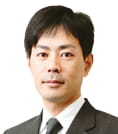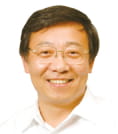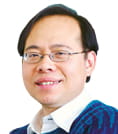- JST Home
- /
- Strategic Basic Research Programs
- /
 CREST
CREST- /
- Research Director/
- Creation of Core Technology based on the Topological Materials Science for Innovative Devices/
- [Topology] Year Started : 2018
[Topology] Year Started : 2018
Takafumi Sato
Development of new hybrid topological materials by nano-spin-ARPES
Grant No.:JPMJCR18T1
Research Director
Takafumi Sato

Professor
Advanced Institute for Materials Research
Tohoku University
Collaborator
| Tamio Oguchi | Specially Appointed Professor Graduate School of Engineering Science The University of Osaka |
| Hiroshi Kumigashira | Professor Institute of Multidisciplinary Research for Advanced Materials Tohoku University |
| Kouji Segawa | Professor Faculty of Science Kyoto Sangyo University |
Outline
This research aims to create new hybrid topological materials with nano-spin ARPES. We construct a nano-spin ARPES apparatus with a one-order higher resolution than that of conventional systems, with which we precisely determine/investigate the electronic structure (energy, momentum, and spin) of novel topological materials even with a nano-scale size. Nano-spin ARPES also enables us to explore the pin-point electronic structure within a small area of integrated topological devices during the operation. We steadily proceed with this research by always looking towards the device applications, such as high-temperature topological superconductors applicable to quantum computations and two-dimensional topological insulators to be used in low-power field-effect transistors.
Atsushi Tsukazaki
Creation of functional interfaces based on topological quantum materials
Grant No.:JPMJCR18T2
Research Director
Atsushi Tsukazaki

Professor
Institute for Materials Research
Tohoku University
Collaborator
| Kentaro Nomura | Professor School of Science Kyushu University |
| Yukitoshi Motome | Professor Graduate School of Engineering The University of Tokyo |
Outline
This research aims for the creation of functional interfaces based on topological quantum materials. The topological materials have great potential to provide significant functionalities in terms of robustness, high efficiency, and less dissipative charge transport. The heterostructure devices with various topological materials, such as three-dimensional topological insulators and Weyl semimetals, will be explored in this project to achieve the functionalities towards highly sensitive sensor and fundamental properties of Majorana fermion. The control methods for the band topology and Fermi energy are essential for the materialization of device applications with extensive collaborative researches. By combining the computational and experimental approaches, we will materialize the intriguing properties emerged at the designed heterointerfaces.
Satoru Nakatsuji
Functional Magnets and Devices based on Topological Electronic Structure
Grant No.:JPMJCR18T3
Research Director
Satoru Nakatsuji

Professor
The Institute for Solid State Physics
The University of Tokyo
Collaborator
| Ryotaro Arita | Team Leader Center for Emergent Matter Science RIKEN |
| Yoshichika Otani | Professor The Institute for Solid State Physics Division of Nanoscale Science The University of Tokyo |
| Kay Yakushiji | Research Center for Emerging Computing Technologies National Institute of Advanced Industrial Science and Technology |
Outline
Current spintronics technology faces various difficulties as ferromagnets are being used for main devices. We will solve them by using antiferromagnets that have novel functions originating from topological electronic structure. In particular, by developing Weyl magnets that exhibit giant electronic and magnetic responses and by studying the electronic control of their nano-scale magnetic domains, we will establish the technology useful for topological antiferromagnetic spintronics.
Xiao Hu
Creating Topological States and Innovative Functionality Based on Artificial Graphenes
Grant No.:JPMJCR18T4
Research Director
Xiao Hu

Senior Scientist with Special Missions
Research Center for Materials Nanoarchitectonics
National Institute for Materials Science
Collaborator
| Tomohiro Amemiya | Associate Professor School of Engineering Institute of Science Tokyo |
| Akihiko Kikuchi | Professor Faculty of Science and Technology, Department of Engineering and Applied Sciences Sophia University |
Outline
Starting from graphene and artificial graphenes exhibiting Dirac-like dispersions originated from the honeycomb structure, we create novel topological states in terms of band engineering based on local real-space manipulations with the aid of advanced nano fabrication techniques. Making use of the crystalline symmetry, we shall achieve topological photonics properties in the optic frequency regime and for visible lights using dielectric materials such as silicon and GaN. Especially, we exploit the topological unidirectional light propagation for stable and compact topological lasers without isolators, where single-mode lasing is possible over a large gain regime. Meanwhile, we explore the possibility of integrating various topological properties, including those of electron, phonon and physics waves, towards realization of innovative functionality.
Nam Hai Pham
Spin-orbit-torque magnetic memories utilizing topological surface states
Grant No.:JPMJCR18T5
Research Director
Nam Hai Pham

Associate Professor
School of Engineering
Tokyo Institute of Technology
Collaborator
| Masaki Kobayashi | Associate Professor The Graduate School of Engineering The University of Tokyo |
| Yasuyoshi Miyamoto | Principal Research Engineer Science & Technology Research Laboratories Japan Broadcasting Corporation |
Outline
In this research, we aim at realizing novel magnetic memories, including spin-orbit-torque magnetoresistive random access memory (SOT-MRAM) and racetrack memory with magnetic chiral domain walls or skyrmions. To obtain ultrafast and ultralow power magnetization switching in SOT-MRAM, we utilize the colossal spin Hall effect generated by the surface states of BiSb topological insulator. We first establish the manufacturing technology of BiSb topological insulator / magnetic thin film heterostructures with perpendicular magnetic anisotropy by the sputtering method. Then, we demonstrate ultrafast and ultralow power magnetization switching by spin-orbit-torque in SOT-MRAM. We also establish methods to generate, to drive, and to detect chiral domain walls and skyrmions in racetrack memory using the colossal Dzyaloshinskii-Moriya interactions and SOT from the BiSb layers.













